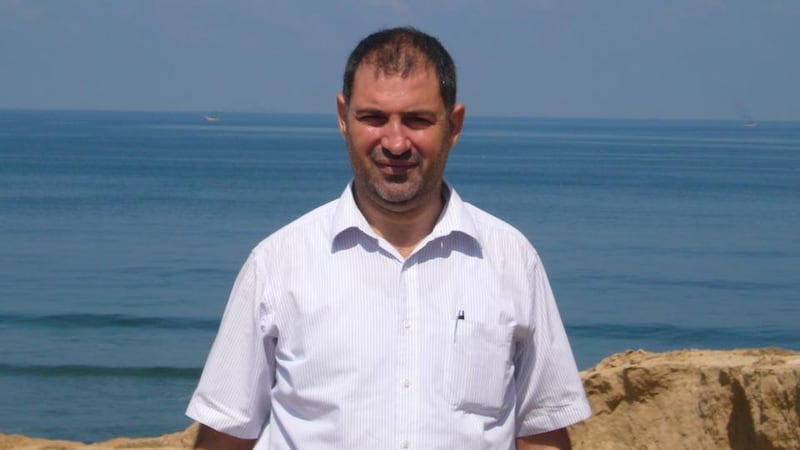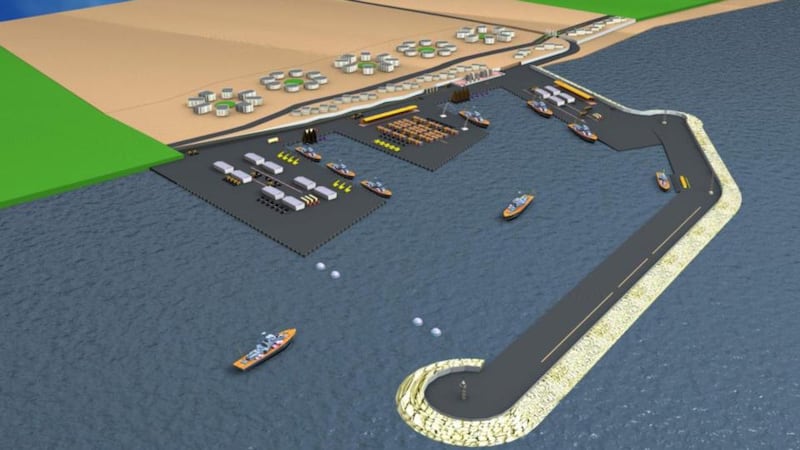In Greek and Roman times, Gaza thrived on shipbuilding, fishing and commerce, all centred on the port at Anthedon in northern Gaza. The strip of land linking Egypt to Palestine was so prosperous that, as Jean-Pierre Filiu wrote in his book Gaza: a History: it "aroused the wrath of the Jewish zealots, who sacked Gaza . . . in AD 66".
Nearly 2,000 years later Ziad Obaid (43) has made restoring Gaza's maritime port his life's work. "All we have is history," jokes the affable and articulate civil engineer, who studied in Pakistan and France.
Yassir Arafat included a deep-water commercial seaport for the fledgling Palestinian state in the 1993 Oslo accords. He brought technical studies with him to Gaza the following year.


Obaid has the titles of assistant chairman of the seaports authority and harbourmaster of Gaza’s nonexistent commercial port. For him the seaport epitomises 21 years of a bogus peace process. He and his children nonetheless cling to the dream, which he calls “the main issue in my family’s life”.
Negotiations
Although the seaport was part of the Oslo agreement, "it took six years to obtain authorisation from the Israelis," Obaid says. "They had to agree to the location and the characteristics. It had to be far enough south not to have any environmental impact on Israel. The Israelis negotiate to negotiate. They use negotiations to buy time and to preserve the status quo."
By 2000, Palestinians and Israelis had agreed on a 12m- deep port capable of receiving four cargo ships, and a 730m breakwater at Sheikh Ejleen, just south of Gaza City.
The Palestinian Authority signed a €70 million contract with Franco- Dutch consortium EGDG 2000 to build the port, which was funded by France, the Netherlands and the European Investment Bank. It was to have been completed by 2002.
The second intifada started in October 2000, three months after work began on the port, however.
“The site was completely closed by Palestinian security. No one was shooting from the port, or from anywhere, for that matter. They were just throwing stones,” says Obaids.
“Israeli tanks and bulldozers came from the settlement at Netzarim and destroyed everything. The contractor said it was a case of force majeur and demanded reparations from the Palestinian Authority. It was a tragedy for us.
European flags
“We have photographs of European flags under the tank treads. The French and Dutch ambassadors came to Gaza and made press statements. There were a lot of complaints from the EU because it was EU-funded. They wanted to improve our economy and living conditions.”
The €110 million Gaza airport, also financed by the EU, functioned from 1998 until 2001, when it too was destroyed by Israel. Passengers were required to undergo Israeli security checks in nearby Rafah. Because Israel severely limits the import of building materials, local Palestinians have cannibalised the destroyed landing strip to rebuild their homes.
The seaport was to have served the West Bank as well as Gaza. Obaid was on the Palestinian negotiating team that attempted to obtain a 40km land corridor between the border with Israel at Erez and Hebron. Again, the Israelis drove a hard bargain.
They wanted an underground tunnel, no wider than 40m. The Palestinians would have had to compensate Israel for the land by giving them an equal portion of the West Bank.
Israel’s relations with Arafat soured. “The Israelis said they couldn’t negotiate with Arafat because he supported terrorism,” says Obaid.
"When Arafat died [in 2004] and Mahmoud Abbas took over, we thought we would get an agreement on the port, because Abbas was more acceptable to them. Then Hamas won the elections in 2006. Donors stopped talking to us. It was impossible to obtain any resources for the project."
Contaminated by Hamas
In recent years, says Obaid, “the Israelis told Abbas they couldn’t negotiate with him because he didn’t represent all Palestinians. So Hamas and Fatah formed a unity government last June and the Israelis said they couldn’t negotiate because it was contaminated by Hamas.
“If the Israelis don’t sign with Abbas there will never be peace. Abbas is the last historic leader, a founder of the PLO. I don’t see any other leader who could convince people. The problem is that the new generation no longer believes in peace.”
Hamas demanded three things in ceasefire negotiations that are supposed to resume soon: the lifting of the seven- year Israeli siege on Gaza; a seaport; and an airport.
"These were legitimate goals," says the Haaretz columnist Gideon Levy.
The seaport is the most important aspect of ending the siege, Obaid says. It would save some $200 million annually in taxes and fees paid to Israel, and give Gaza an opening to the outside world. The Palestinians say they’d allow international monitors to search cargos. But Israel will not allow a seaport unless Hamas disarms.
Obaid and his 20-strong team would put out bids for tender the moment an agreement was reached. He says the port could be built in as little as 18 months, and he is cautiously optimistic: “We have the right to build a port, so sooner or later it will happen.”
In the meantime, Obaid says, “The Israelis enjoy our suffering. They want to make our life difficult and they want us to leave. We have told them we want to live in peace. Just give us the minimum to survive.”











